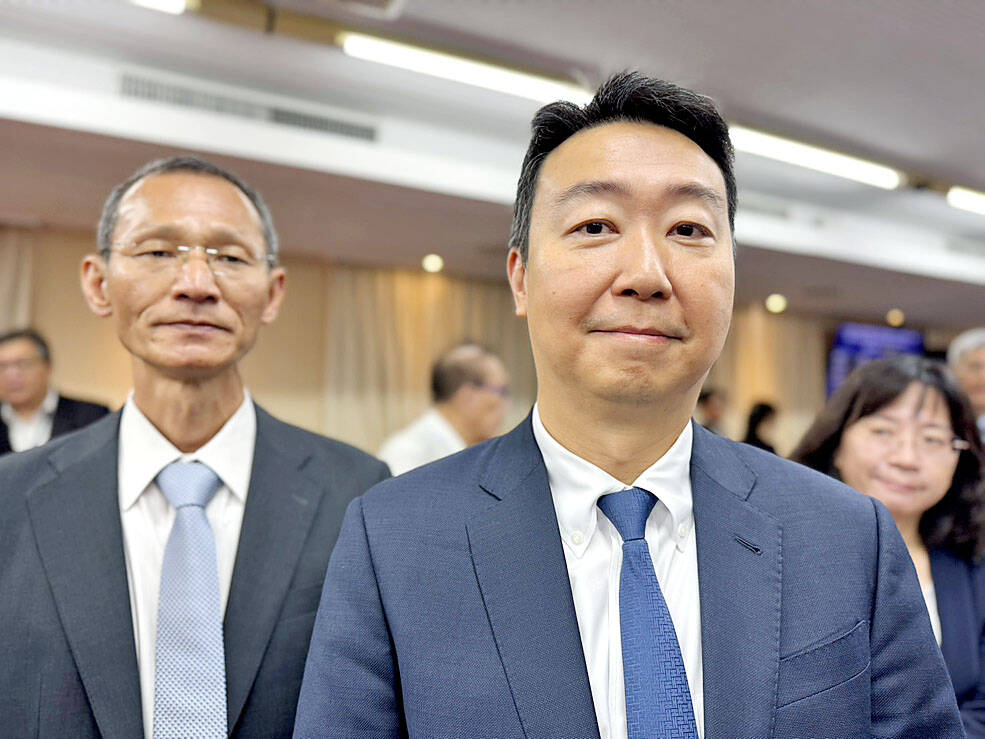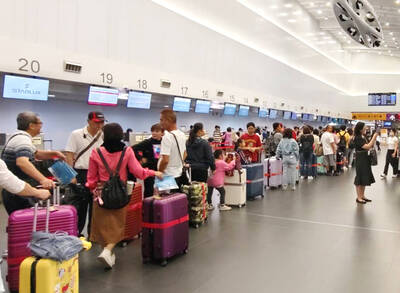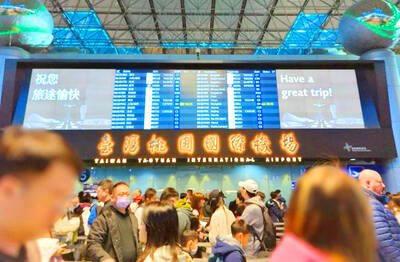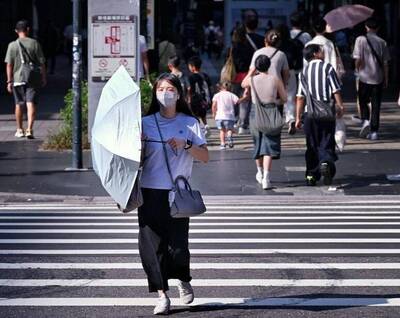The Ministry of Transportation and Communications is launching TPASS 2.0+ to encourage people to take medium and long-distance intercity buses by offering cashback incentives for trips of longer than 70km.
Passenger would receive a rebate of 15 percent after two qualifying trips, and 30 percent after four trips, Minister of Transportation and Communications Chen Shih-kai (陳世凱) said at a meeting of the legislature’s Transportation Committee yesterday.
For example, passengers who make two round trips from Taipei to Hsinchu would get a NT$45 rebate, as the one-way fare is NT$150, Chen said.

Photo: CNA
The ministry launched the TPASS program in 2023 to reduce the financial burden of daily commuting.
Now there are 29 commuter pass programs across 20 cities and counties.
The ministry upgraded the program to TPASS 2.0 earlier this year, encouraging people to take public transportation by offering discounts to frequent passengers.
Public transportation ridership last year increased by 27.4 percent compared with the period before the implementation of the TPASS, according to a ministry report.
From January to July this year, ridership grew by 41.4 percent compared with the same period in 2022, the ministry said.
Intercity buses play a vital role in Taiwan’s transportation system, and the ministry is launching TPASS 2.0+ to promote the industry’s healthy development, Chen said.
People can register next month and the TPASS 2.0+ rebate program would hopefully launch in December, Highway Administration Director-General Lin Fu-shan (林福山) said.
There are currently 85 intercity bus routes that qualify for the rebate, and passengers taking intercity buses during long weekends would benefit from additional holiday discounts, Lin said.

Three Taiwanese airlines have prohibited passengers from packing Bluetooth earbuds and their charger cases in checked luggage. EVA Air and Uni Air said that Bluetooth earbuds and charger cases are categorized as portable electronic devices, which should be switched off if they are placed in checked luggage based on international aviation safety regulations. They must not be in standby or sleep mode. However, as charging would continue when earbuds are placed in the charger cases, which would contravene international aviation regulations, their cases must be carried as hand luggage, they said. Tigerair Taiwan said that earbud charger cases are equipped

Foreign travelers entering Taiwan on a short layover via Taiwan Taoyuan International Airport are receiving NT$600 gift vouchers from yesterday, the Tourism Administration said, adding that it hopes the incentive would boost tourism consumption at the airport. The program, which allows travelers holding non-Taiwan passports who enter the country during a layover of up to 24 hours to claim a voucher, aims to promote attractions at the airport, the agency said in a statement on Friday. To participate, travelers must sign up on the campaign Web site, the agency said. They can then present their passport and boarding pass for their connecting international

Temperatures in northern Taiwan are forecast to reach as high as 30°C today, as an ongoing northeasterly seasonal wind system weakens, the Central Weather Administration (CWA) said. CWA forecaster Tseng Chao-cheng (曾昭誠) said yesterday that with the seasonal wind system weakening, warmer easterly winds would boost the temperature today. Daytime temperatures in northern Taiwan and Yilan County are expected to range from 28°C to 30°C today, up about 3°C from yesterday, Tseng said. According to the CWA, temperature highs in central and southern Taiwan could stay stable. However, the weather is expected to turn cooler starting tonight as the northeasterly wind system strengthens again

Taiwan sweltered through its hottest October on record, the Central Weather Administration (CWA) said yesterday, the latest in a string of global temperature records. The main island endured its highest average temperature since 1950, CWA forecaster Liu Pei-teng said. Temperatures the world over have soared in recent years as human-induced climate change contributes to ever more erratic weather patterns. Taiwan’s average temperature was 27.381°C as of Thursday, Liu said. Liu said the average could slip 0.1°C by the end of yesterday, but it would still be higher than the previous record of 27.009°C in 2016. "The temperature only started lowering around Oct. 18 or 19